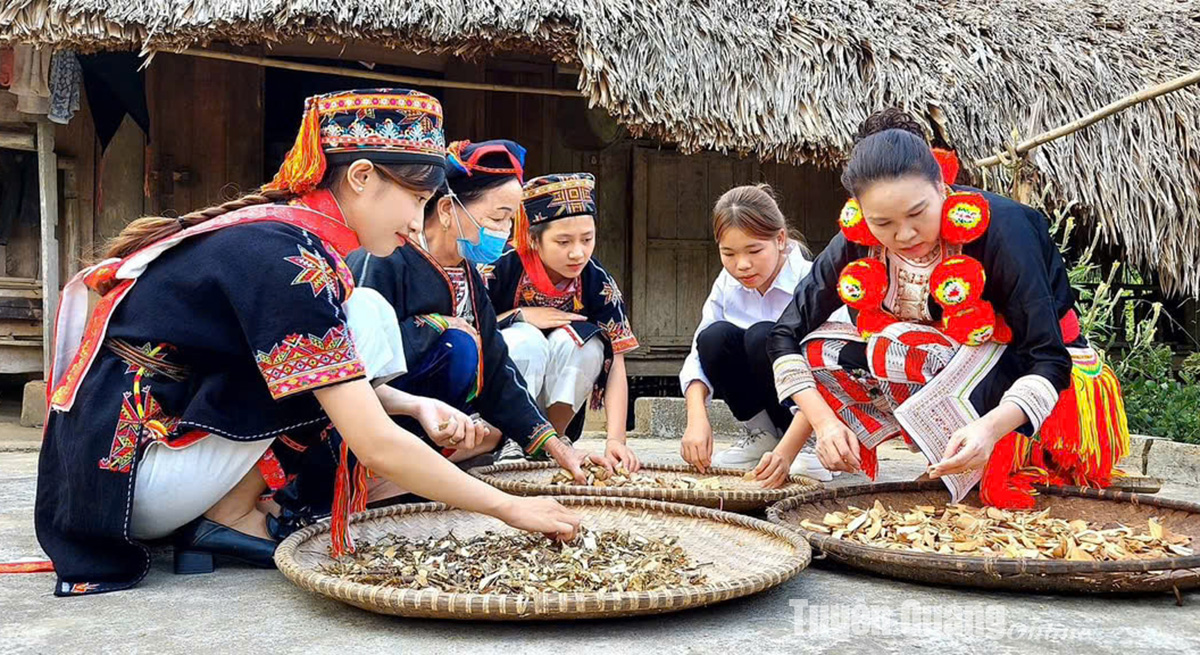
Ms. Ban Thi Lien (far right), Director of Tue Tam Herbal Medicine Company Limited (Tuyen Quang City) with medicinal recipes of the Dao ethnic group.
The province has identified the development of medicinal plants as one of the new directions to transform the structure of crops with high economic value in the locality.
Thereby, both exploiting and promoting effectively the potentials and strengths of each region and locality, at the same time, preserving and conserving valuable genetic resources, gradually turning medicinal plants into "key" crops, aiming to increase the value of cultivation.
The whole province currently has over 227 hectares of medicinal plants grown according to programs, projects and spontaneously grown by the people. Of which, medicinal plants under the forest canopy have about 100 hectares, concentrated in the districts of Na Hang, Lam Binh, and Chiem Hoa.
Up to now, the whole province has had over 10 provincial and district-level scientific and technological topics and projects on the development of medicinal plants being researched, including many projects on growing medicinal plants under the forest canopy.
At the same time, the province has issued support mechanisms and policies through many resolutions on issuing specific policies to encourage businesses and cooperatives to invest in developing medicinal plants.
According to experts' assessment, Tuyen Quang has terrain, climate, vegetation, and natural landscapes that are very suitable for tourists to explore.
In particular, medicinal plants and medicinal plant development models will have the potential to attract tourists.
For many years, the rural tourism model has been exploited, combining with local people to create new values and experiences for tourists.
Hopefully, with practical and appropriate policies, the development of medicinal plants in the province will go in the right direction, contributing to increasing income for people, and contributing to bringing traditional medicinal plants to a higher role in the structure of medicine use of Vietnamese people.

Comment
Print